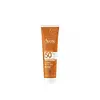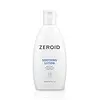What's inside
What's inside
 Key Ingredients
Key Ingredients

 Benefits
Benefits

 Concerns
Concerns

 Ingredients Side-by-side
Ingredients Side-by-side

Water
Skin ConditioningDiethylamino Hydroxybenzoyl Hexyl Benzoate
UV FilterDiisopropyl Sebacate
EmollientCoco-Caprylate/Caprate
EmollientDicaprylyl Carbonate
EmollientDiethylhexyl Butamido Triazone
UV AbsorberGlycerin
HumectantBis-Ethylhexyloxyphenol Methoxyphenyl Triazine
Skin ConditioningGlyceryl Stearate Citrate
EmollientOryza Sativa Starch
AbsorbentPentylene Glycol
Skin ConditioningC12-15 Alkyl Benzoate
AntimicrobialVp/Eicosene Copolymer
Benzoic Acid
MaskingCaprylic/Capric Triglyceride
MaskingCellulose Gum
Emulsion StabilisingCetearyl Olivate
Parfum
MaskingGlycine Soja Oil
EmollientHelianthus Annuus Seed Oil
EmollientMicrocrystalline Cellulose
AbsorbentSodium Hydroxide
BufferingSorbitan Olivate
EmulsifyingTocopherol
AntioxidantTocopheryl Glucoside
EmollientXanthan Gum
EmulsifyingWater, Diethylamino Hydroxybenzoyl Hexyl Benzoate, Diisopropyl Sebacate, Coco-Caprylate/Caprate, Dicaprylyl Carbonate, Diethylhexyl Butamido Triazone, Glycerin, Bis-Ethylhexyloxyphenol Methoxyphenyl Triazine, Glyceryl Stearate Citrate, Oryza Sativa Starch, Pentylene Glycol, C12-15 Alkyl Benzoate, Vp/Eicosene Copolymer, Benzoic Acid, Caprylic/Capric Triglyceride, Cellulose Gum, Cetearyl Olivate, Parfum, Glycine Soja Oil, Helianthus Annuus Seed Oil, Microcrystalline Cellulose, Sodium Hydroxide, Sorbitan Olivate, Tocopherol, Tocopheryl Glucoside, Xanthan Gum
Water
Skin ConditioningGlycerin
HumectantPropanediol
SolventCaprylic/Capric Triglyceride
MaskingCetearyl Alcohol
EmollientSorbitan Stearate
EmulsifyingCarthamus Tinctorius Seed Oil
MaskingGlyceryl Stearate
EmollientStearic Acid
CleansingMyristoyl/Palmitoyl Oxostearamide/Arachamide Mea
Skin ConditioningMethyl Caprooyl Tyrosinate
Skin ProtectingPhytosterols
Skin ConditioningTocopheryl Acetate
AntioxidantBisabolol
MaskingXanthan Gum
EmulsifyingSodium Hyaluronate
HumectantDimethicone
Emollient1,2-Hexanediol
Skin ConditioningCaprylyl Glycol
EmollientTropolone
Skin ConditioningWater, Glycerin, Propanediol, Caprylic/Capric Triglyceride, Cetearyl Alcohol, Sorbitan Stearate, Carthamus Tinctorius Seed Oil, Glyceryl Stearate, Stearic Acid, Myristoyl/Palmitoyl Oxostearamide/Arachamide Mea, Methyl Caprooyl Tyrosinate, Phytosterols, Tocopheryl Acetate, Bisabolol, Xanthan Gum, Sodium Hyaluronate, Dimethicone, 1,2-Hexanediol, Caprylyl Glycol, Tropolone
 Reviews
Reviews

Ingredients Explained
These ingredients are found in both products.
Ingredients higher up in an ingredient list are typically present in a larger amount.
This ingredient is an emollient, solvent, and texture enhancer. It is considered a skin-softener by helping the skin prevent moisture loss.
It helps thicken a product's formula and makes it easier to spread by dissolving clumping compounds.
Caprylic Triglyceride is made by combining glycerin with coconut oil, forming a clear liquid.
While there is an assumption Caprylic Triglyceride can clog pores due to it being derived from coconut oil, there is no research supporting this.
Learn more about Caprylic/Capric TriglycerideGlycerin is already naturally found in your skin. It helps moisturize and protect your skin.
A study from 2016 found glycerin to be more effective as a humectant than AHAs and hyaluronic acid.
As a humectant, it helps the skin stay hydrated by pulling moisture to your skin. The low molecular weight of glycerin allows it to pull moisture into the deeper layers of your skin.
Hydrated skin improves your skin barrier; Your skin barrier helps protect against irritants and bacteria.
Glycerin has also been found to have antimicrobial and antiviral properties. Due to these properties, glycerin is often used in wound and burn treatments.
In cosmetics, glycerin is usually derived from plants such as soybean or palm. However, it can also be sourced from animals, such as tallow or animal fat.
This ingredient is organic, colorless, odorless, and non-toxic.
Glycerin is the name for this ingredient in American English. British English uses Glycerol/Glycerine.
Learn more about GlycerinWater. It's the most common cosmetic ingredient of all. You'll usually see it at the top of ingredient lists, meaning that it makes up the largest part of the product.
So why is it so popular? Water most often acts as a solvent - this means that it helps dissolve other ingredients into the formulation.
You'll also recognize water as that liquid we all need to stay alive. If you see this, drink a glass of water. Stay hydrated!
Learn more about WaterXanthan gum is used as a stabilizer and thickener within cosmetic products. It helps give products a sticky, thick feeling - preventing them from being too runny.
On the technical side of things, xanthan gum is a polysaccharide - a combination consisting of multiple sugar molecules bonded together.
Xanthan gum is a pretty common and great ingredient. It is a natural, non-toxic, non-irritating ingredient that is also commonly used in food products.
Learn more about Xanthan Gum